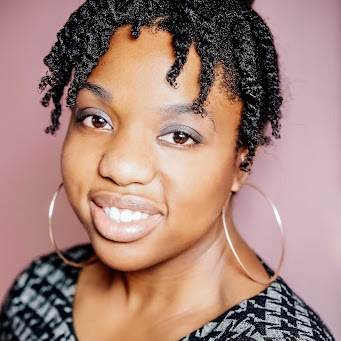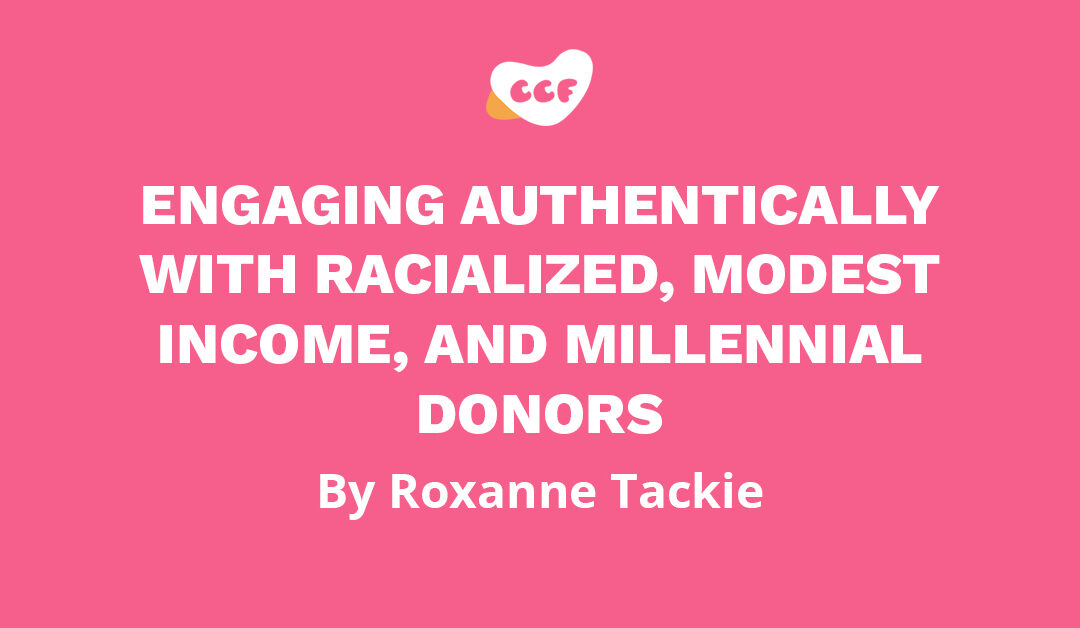By Roxanne Tackie, passionate promoter of racial equity in the nonprofit sector and beyond
Charitable giving potential is often measured by individual tax returns, and gifts sent to registered charitable organizations. However, people who don’t claim tax credits are still generous. Consider donors who give to crowdsourcing platforms which cannot be claimed by income tax. Or donors who give to people or organizations that are not linked to registered charities. Or what about those who donate their time through volunteerism?
Our world is constantly changing, as are our attitudes and approaches. Still, many fundraising practices remain focused on pointing to data encouraging fundraisers to seek donations from very wealthy, typically white, cisgender male donors. This trend has then informed practices based more on “tradition” rather than truly examining the fundraising landscape, and how it has changed over time.
Canada’s demographics are changing, and our country is becoming increasingly more diverse. Racialized communities are growing with South Asian, Chinese, and Black communities together representing over 16% of Canada’s population compared to just over 13% in 2016. Canada also has significant ethnocultural diversity; over 450 ethnic or cultural origins were reported in the 2021 census. Also, more than 2 million Canadians self-declare as Indigenous.
In addition to racial and ethnic shifts in the population, millennials are now the fastest-growing generation in Canada and also make up the largest portion of the working-age population. This group is expected to be the largest generation in the country by 2029, outnumbering baby boomers. Furthermore, about one million people make up the 2SLGBTQ+ community in Canada.
So with these striking changes in the way Canada looks, isn’t it apparent that our approaches to fundraising should evolve? Shouldn’t we consider the giving patterns and practices of racialized and millennial donors?
The charity of racialized and millennial donors
Interestingly, there is not much research on high net-worth racialized donors because typically, the sector has treated these donors as “anomalies,” or people who do not represent the majority. But we need to be very cautious with this assumption because it is untrue and certainly unproven. In fact, the report Philanthropy Always Sounds Like Someone Else: A Portrait of High Net Worth Donors of Color shares data from qualitative research with 113 high net-worth donors who are Black, Indigenous, and Persons of Colour.
And what about donors with modest incomes? Charitable giving potential is often measured by individual tax returns, and gifts sent to registered charitable organizations. However, people who don’t claim tax credits are still generous. Consider donors who give to crowdsourcing platforms which cannot be claimed by income tax. Or donors who give to people or organizations that are not linked to registered charities. Or what about those who donate their time through volunteerism?
Clearly, the number of people making charitable donations is higher, and perhaps significantly higher, than those claiming tax credits.
How can organizations be inclusive and welcoming to racialized, modest-income, and millennial donors?
So the big question is – since the sector has likely underestimated the giving potential of racialized, modest-income, and millennial donors, how do organizations ensure their fundraising practices are inclusive and welcoming to these communities? And more importantly, how do organizations engage these communities in a way that is authentic and non-performative?
It is not an easy answer, but here are some basic practices that organizations can start working on immediately.
- Create an environment that attracts a diverse board and staff. We’ve often heard the saying, “great minds think alike,” but the truth is, “great minds don’t think alike.” There is value in diversity of thought as it leads to more perspectives and innovation. So if your organization’s board and staff do not have diverse representation from communities of colour, people of modest incomes, and younger generations, consider what barriers exist that may be preventing diverse perspectives from joining your team and work to eliminate them. This may require some self-reflection so your team can work to be stronger.
- Share Inclusive Stories. Storytelling and fundraising go hand-in-hand. But how we tell stories can impact how inclusive an organization’s fundraising efforts are. For example, do donor testimonials perpetuate stereotypes? Donors are not “saviors” who swoop in and save the day for a community. They do, however, work alongside organizations to support a cause so communities can better support themselves. Ensure your organization is careful how it words stories, and always be mindful of how historically marginalized communities are being presented.
- Decline support from problematic figures. This one may seem challenging, but there is sometimes good reason to decline a donation or decline support from a volunteer. Our consultancy once worked with a 2SLGBTQ+ organization concerned that a public figure who had made derogatory comments about the gay community was pledging support to their organization as a way to make amends for his past comments. This organization knew that accepting a donation from this public figure would damage their reputation with their own community, thus they could not accept it. A nonprofit organization’s reputation and goodwill with the community is paramount to its success. Therefore, maintaining strong values and knowing when to say “no” is of utmost importance.
- Work to build relationships over time. There is truly no substitute for building donor relationships. If your organization sees the value in having an inclusive approach to fundraising, it will take time to build relationships and appeal to diverse audiences. But if you are doing good work for the right reasons, with patience and consistency your organization will build relationships with a diverse community of donors and supporters.
In the words of Mahatma Gandhi, “no culture can live if it attempts to be exclusive.” The data shows us clearly, there is no “one-size-fits-all” approach to cultivating relationships with donors. As our communities continue to become more diverse, the sector’s fundraising practices should follow. Any organization that wishes to thrive into the future must recognize how the world is now, and how it will continue to change in the future. Traditions can be helpful, but they don’t have to stay the same.
One similarity between all donors is they want to help, so in response, we must speak to all of them inclusively. When we choose to expand the types of donors we focus on, the stories we tell, and the board members that volunteer with our organizations, we can set ourselves up for the new opportunities that come from diversity.

Roxanne Tackie
Roxanne (she/her) has over a decade of experience in the nonprofit sector. As a former Executive Director, Roxanne’s role as a nonprofit professional has included identifying prospects, grant and proposal writing, developing and implementing stewardship plans, and creating impact reports for donors. Roxanne currently works alongside her sister at Story Point Consulting where they create digital tools and training aimed at increasing fundraising capacity for staff and volunteers of small, grassroots nonprofits. The best part of Roxanne’s work is learning about the diverse organizations within the nonprofit sector, and using her skills to help people develop genuine and long-term relationships with their supporters.
Discover more from CCF
Subscribe to get the latest posts sent to your email.


Love this! This really resonates with me! Thank you for putting these ideas out there!
I love the reminder that “great minds don’t think alike”! Thank you for providing guidance on these important practices.